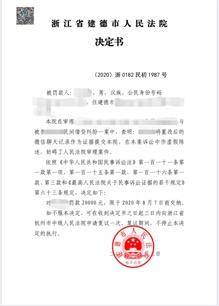- upstream backend {
- server squid1:3128;
- server squid2:3128;
- hash $request_uri;
- hash_method crc32;
- }
- tips:
- upstream bakend{#е®ҡд№үиҙҹиҪҪеқҮиЎЎи®ҫеӨҮзҡ„IpеҸҠи®ҫеӨҮзҠ¶жҖҒ
- ip_hash;
- server 127.0.0.1:9090 down;
- server 127.0.0.1:8080 weight=2;
- server 127.0.0.1:6060;
- server 127.0.0.1:7070 backup;
- }
еңЁйңҖиҰҒдҪҝз”ЁиҙҹиҪҪеқҮиЎЎзҡ„serverдёӯеўһеҠ
proxy_pass http://bakend/;
жҜҸдёӘи®ҫеӨҮзҡ„зҠ¶жҖҒи®ҫзҪ®дёәпјҡ
1.down иЎЁзӨәеҚ•еүҚзҡ„serverжҡӮж—¶дёҚеҸӮдёҺиҙҹиҪҪ
2.weight й»ҳи®Өдёә1.weightи¶ҠеӨ§пјҢиҙҹиҪҪзҡ„жқғйҮҚе°ұи¶ҠеӨ§ гҖӮ
3.max_fails :е…Ғи®ёиҜ·жұӮеӨұиҙҘзҡ„ж¬Ўж•°й»ҳи®Өдёә1.еҪ“и¶…иҝҮжңҖеӨ§ж¬Ўж•°ж—¶пјҢиҝ”еӣһproxy_next_upstream жЁЎеқ—е®ҡд№үзҡ„й”ҷиҜҜ
4.fail_timeout:max_failsж¬ЎеӨұиҙҘеҗҺпјҢжҡӮеҒңзҡ„ж—¶й—ҙ гҖӮ
5.backup: е…¶е®ғжүҖжңүзҡ„йқһbackupжңәеҷЁdownжҲ–иҖ…еҝҷзҡ„ж—¶еҖҷпјҢиҜ·жұӮbackupжңәеҷЁ гҖӮжүҖд»ҘиҝҷеҸ°жңәеҷЁеҺӢеҠӣдјҡжңҖиҪ» гҖӮ
nginxж”ҜжҢҒеҗҢж—¶и®ҫзҪ®еӨҡз»„зҡ„иҙҹиҪҪеқҮиЎЎпјҢз”ЁжқҘз»ҷдёҚз”Ёзҡ„serverжқҘдҪҝз”Ё гҖӮ
client_body_in_file_only и®ҫзҪ®дёәOn еҸҜд»Ҙи®Іclient postиҝҮжқҘзҡ„ж•°жҚ®и®°еҪ•еҲ°ж–Ү件дёӯз”ЁжқҘеҒҡdebug
client_body_temp_path и®ҫзҪ®и®°еҪ•ж–Ү件зҡ„зӣ®еҪ• еҸҜд»Ҙи®ҫзҪ®жңҖеӨҡ3еұӮзӣ®еҪ•
location еҜ№URLиҝӣиЎҢеҢ№й…Қ гҖӮеҸҜд»Ҙ
гҖҗNginx+Tomcatжҗӯе»әй«ҳжҖ§иғҪиҙҹиҪҪеқҮиЎЎйӣҶзҫӨгҖ‘
жҺЁиҚҗйҳ…иҜ»
- еҲҶдә«Nginxжҗӯе»әеӣҫзүҮжңҚеҠЎеҷЁз®ҖеҚ•е®һзҺ°
- LinuxдёӢеҰӮдҪ•з”Ёnginx+ffmpegжҗӯе»әжөҒеӘ’дҪ“жңҚеҠЎеҷЁ
- ж•°жҚ®еә“иҜ»еҶҷеҲҶзҰ»ж–№жЎҲпјҢе®һзҺ°й«ҳжҖ§иғҪж•°жҚ®еә“йӣҶзҫӨ
- еұ•дјҡжҗӯе»әиЈ…дҝ®зҡ„е°ҸжҠҖе·§
- 10еҲҶй’ҹжҗӯе»әеҹәдәҺSpring Cloudзҡ„еҫ®жңҚеҠЎжЎҶжһ¶
- зҪ‘з»ңж–Ү件系з»ҹ CentOS7жңҚеҠЎжҗӯе»ә----жҗӯе»әNFSжңҚеҠЎеҷЁ
- JavaдёҺNettyе®һзҺ°й«ҳжҖ§иғҪй«ҳ并еҸ‘
- з”ЁPythonжҗӯе»әдёҖдёӘwebжЎҶжһ¶-flaskеҫ®жЎҶжһ¶
- жҗӯе»әapacheжңҚеҠЎеҷЁпјҢй»ҳи®ӨзҪ‘з«ҷжөҸи§ҲпјҢй»ҳи®ӨйЎөйЎөйқўж–Ү件дҝ®ж”№
- CenterOS 7.5дёӢMysql Cluster 7.6.12й«ҳеҸҜз”ЁйӣҶзҫӨжҗӯе»ә




![[й’ҹеҚ—еұұ]科жҠҖиҝһжҺҘеҒҘеә·пјҢеҚҺзұіз§‘жҠҖжҗәй’ҹеҚ—еұұйҷўеЈ«еӣўйҳҹе…ұе»әиҒ”еҗҲе®һйӘҢе®Ө](http://ttbs.guangsuss.com/image/472def0d65db67c2882faff65406ed8c)










